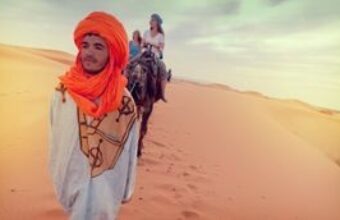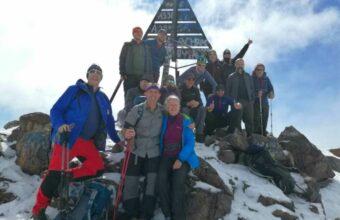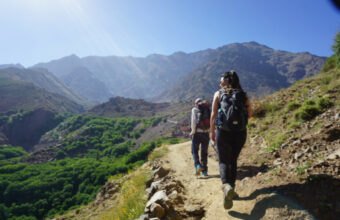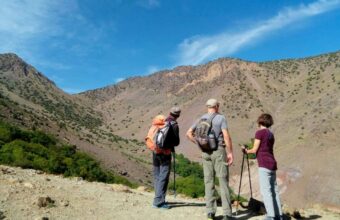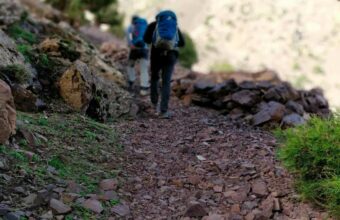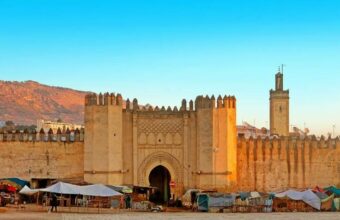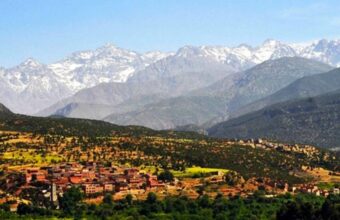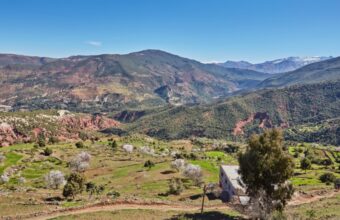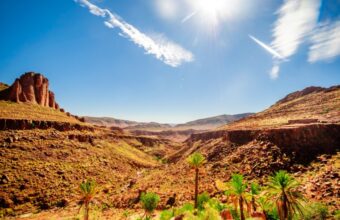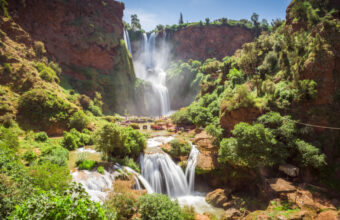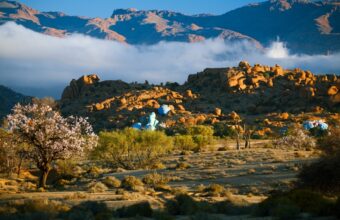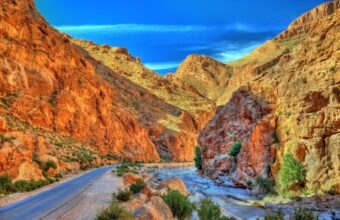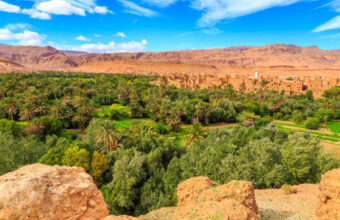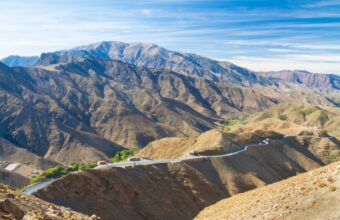Trekking in the Atlas Mountains
An expert guide to trekking Mount Toubkal & the Atlas
The giant of the Morocco trekking scene, there's little wonder that Toubkal and the Atlas Mountains are the country’s top hiking location.
Home to a majority Amazigh (Berber) population, life in the Atlas Mountains seems to have stood still. This is rural Morocco at its most evocative. Children run freely through valleys. Farmers, both men and women, tend to their plots of land. Donkeys provide a mode of transport for both young and old. Stony pathways wind through the mountains to villages not visible from main roads.
Standing atop of it all is the mighty Jebel (Mount) Toubkal which, at 4,167m, is North Africa's highest peak.
The Atlas (from which the Atlantic Ocean was named) is actually three ranges in one; the Middle Atlas in the country’s north, the High Atlas in central Morocco and the Anti-Atlas in the south. Each is drastically different and provides varied trekking options – even the colourful carpets produced by the many tribes are as diverse as the landscapes.
Agriculturally rich, the trees (apple, cherry, apricot, and even almond and walnut trees) begin to bloom in February throughout the Atlas, creating a riot of colours and smells. The region is popular year-round with locals, but the summer months see many Moroccans escape the heat of nearby Marrakech by heading to the mountains of Toubkal National Park.
By far the most popular trekking location in the Atlas is Toubkal National Park, an hour’s drive from Marrakech. People flock here to climb Jebel Toubkal, but there are many more trekking routes available across the Atlas Mountain ranges.
Ready to go? Here's my expert guide to trekking in the Atlas Mountains.
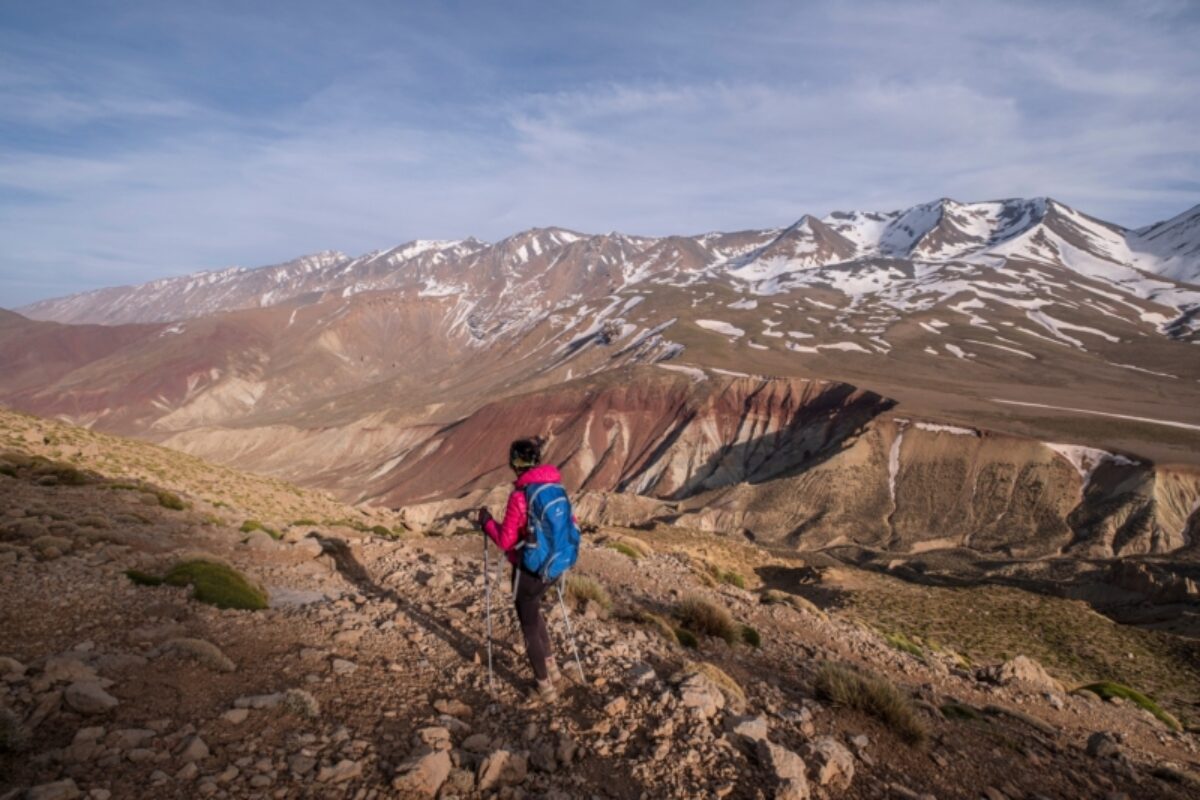
The M'Goun Circuit trek, the less popular but equally impressive alternative to Toubkal
Where to trek Toubkal & the Atlas Mountains
Our experts' top picks
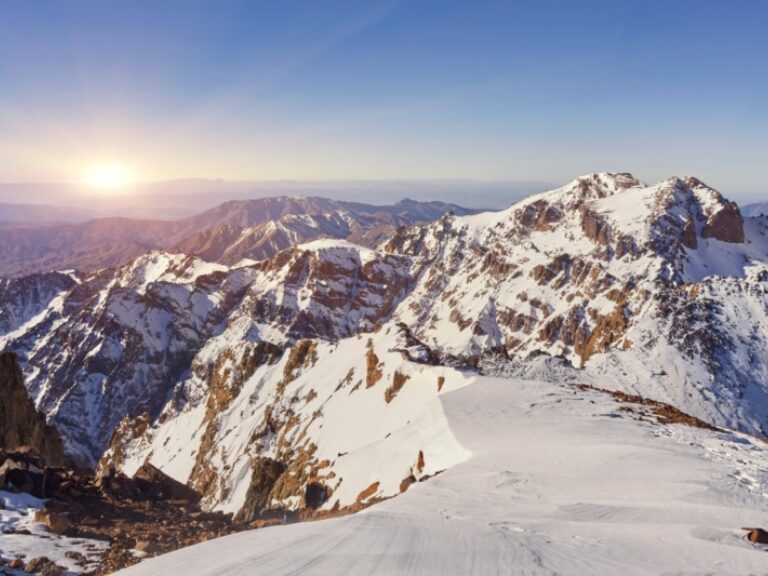
Toubkal National Park
Toubkal National Park
Best trek: Toubkal Circuit (six days)
No round-up of Morocco trekking highlights can ignore Toubkal National Park in the High Atlas Range, the highest and most extensive stretch of the Atlas Mountains.
Home to Jebel (Mount) Toubkal, North Africa’s highest peak, this is by far Morocco's most popular hiking destination. It's a region of sparse, rocky and snow-capped (in winter) peaks and lush green valleys below with blossoming fruit trees in the spring, which make for some excellent trekking and hiking, although one that draws significant crowds.
While the tourism industry likes to push the two-day Mt Toubkal trek, I'd highly recommend making time for the six-day Toubkal Circuit trek.
The trailhead is just beyond the village of Imlil, where most visitors disembark to start their hike. Hiring a guide to accompany non-locals on the journey is a must, in fact, it’s mandatory. I’d suggest hiring an official guide to avoid any faux guides who may be hanging around en route. Licensed guides are typically local and undergo training to earn their certification to help trekkers navigate the way, the weather and organise supplies for the journey.
For a shorter hike, depart Imlil to wander through lush green valleys, climbing up to one of the mountainside Amazigh villages or an approximately six-hour trek to Sidi Chamharouch, a pre-Islamic pilgrimage site known for healing health issues or exorcising spirits.
From Marrakech, a day trip to Ouzoud Waterfalls makes for a refreshing day out. The trail is easily marked, meaning just organise transport and you can easily follow the path to the canyon where two-tiered waterfalls cascade. Be mindful of the Barbary apes you may encounter while passing through the shaded areas.
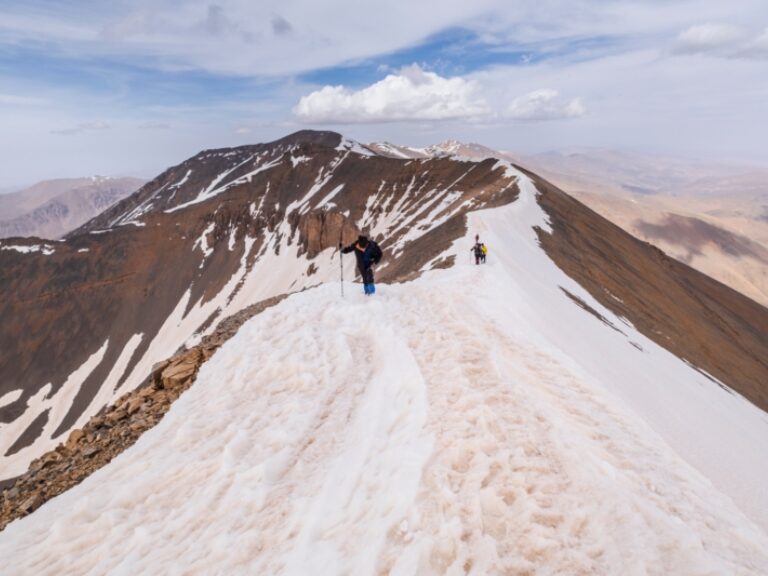
Ait Bougmez Valley
Aït Bougmez Valley & M'goun Massif
Best trek: M'goun Circuit trek (five days)
Few hikers make it to Aït Bougmez, a valley running along the M'goun Massif in Morocco's Central High Atlas mountains. Those who do are rewarded with lush pastures, picturesque views across the valley and hospitable locals who don’t let language barriers get in the way—and some of the best trekking in Morocco.
Every spring, the nomadic Ait Atta tribes make a two-week trek to the Aït Bougmez Valley. Once here, they graze their herds in the valley’s rich pastures and sparkling rivers fed from glacial lakes before returning home for the winter. Avid trekkers can join for the transhumance (livestock migration), an activity that may be best done sooner rather than later given the decline of traditional nomadic life.
The village of Agouti is the starting point for a scenic three- or six-day trek to the M’Goun Massif, the second highest peak in Morocco (after Jebel Toubkal in the nearby Toubkal National Park).
Hire a mountain guide to accompany you and plan to stay in gites along the way. This trek is best done from spring to fall, before the harsh winters descend on the valley.
Staying in the valley provides opportunity for day treks to a glacial lake where nomadic tribes graze their herds in the summer months, or multi-day treks traversing the valley. With little signage and few restaurants, it is best to visit with a Morocco trekking operator, or find your own trekking guide locally who will also coordinate muleteers and piping hot cuisine along the way.
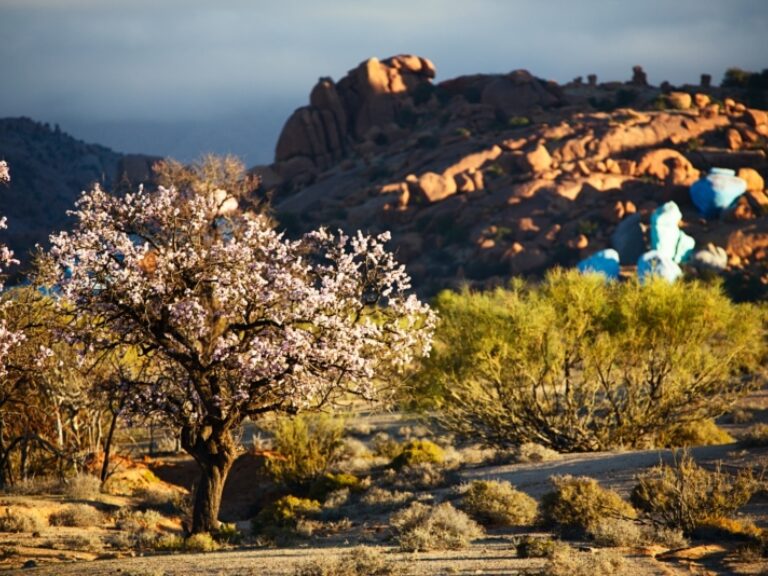
Tafraoute
Tafraoute & AmeIn Valley
The Anti-Atlas Mountain town of Tafraoute, gateway to the stunning AmeIn Valley, is worth a visit for a night or two allowing for at least a day hike, or just a break for travellers heading to/from the Sahara Desert. Famous for its almonds, colourful babouche slippers particular to the region, and even as a starting point for cycling up to the blue rocks and spotting prehistoric rock carvings. The town hosts an almond blossom festival, typically in February although the dates vary, which includes folklore displays to celebrate the harvest. The town is accessible by national bus companies.
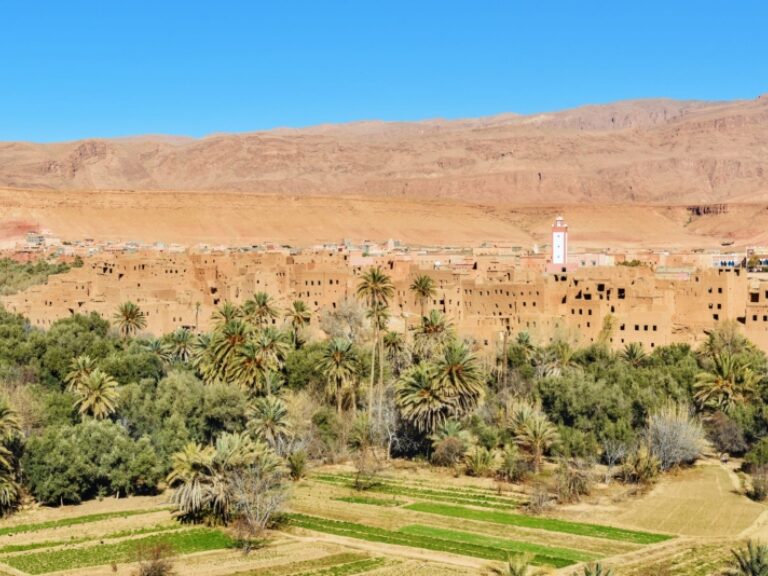
Todra Gorge
Todgha Gorge
Todgha (or Todra as it is sometimes spelt) Gorge has become something of a tourist hotspot with locals selling carpets, fossils, and other finds as visitors wander amongst the limestone canons and cafes lining the riverbed. A number of three-star guest houses provide the perfect base for leisurely wanders through the palm groves or a longer trek through the mountains where nomadic families are known to reside. National bus companies provide service to this region daily.
The best Toubkal & Atlas Mountains treks
Some popular – and lesser known – hikes
In my opinion there's no beating the Aït Bougmez Valley, in particular the M'goun Circuit. Aït Bougmez draws a fraction of the visitors that come to the Toubkal region, but has some of the best hiking in the country. That said, all the following are well worth your consideration.
-
Toubkal National Park
View trips -
Atlas Mountains
View trips -
Atlas Mountains
View trips -
Atlas Mountains
View trips -
Atlas Mountains
View trips -
Tanaghmeilt
-
Tafraoute
-
Todra Gorge
View trips -
Dadès Valley
View trips -
Atlas Mountains
View trips
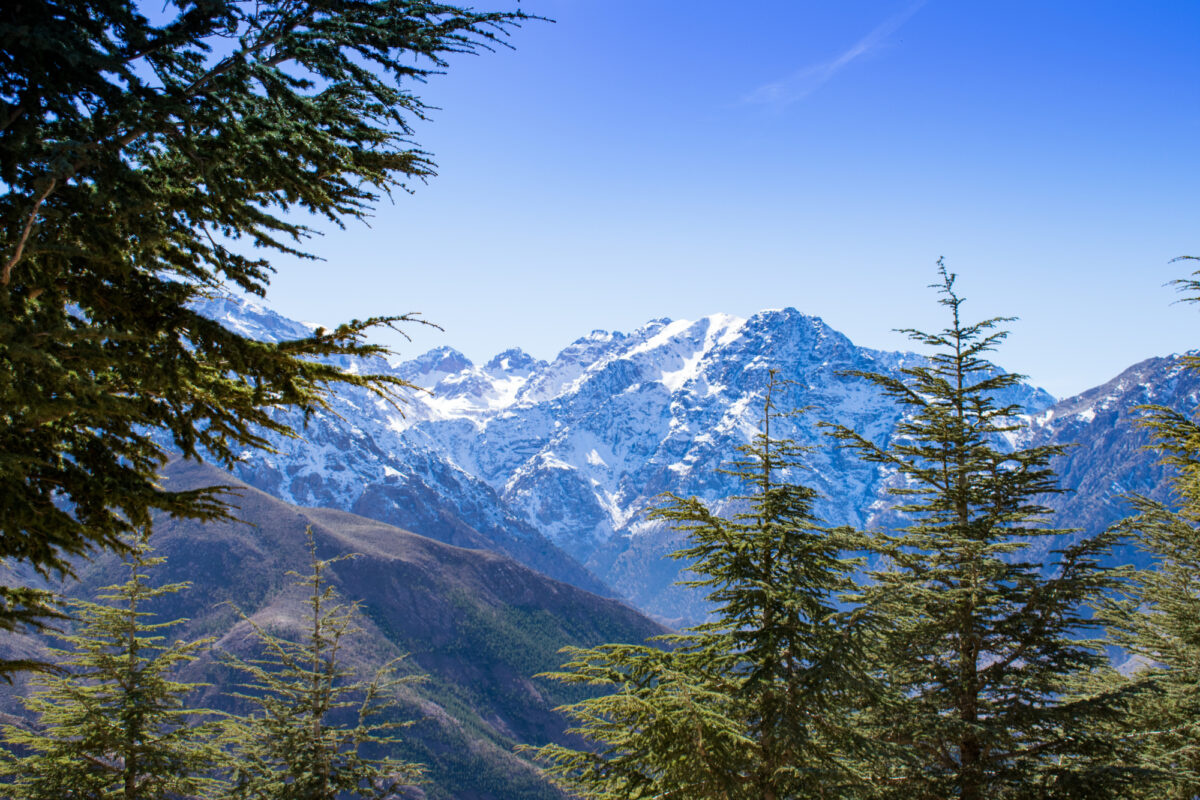
View from a hiking trail in Imlil, High Atlas
Trekking in the Atlas Mountains: Need to know
Everything you wish you'd known before you booked
Look beyond Toubkal
As is often the case with the tourism industry, most operators chase the demand for Mount Toubkal, at the unfortunate expense of other equally impressive locations and experiences.
Few visitors journey to Ait Bougmez, a valley running along the Mgoun Massif in Morocco's Central High Atlas mountains. Those who do are rewarded with lush pastures, picturesque views across the valley and hospitable locals who don’t let language barriers get in the way—and some of the best hiking in Morocco.
In the spring, nomadic Ait Atta tribes from the south hike across Mount Mgoun (the second highest mountain in the Atlas region) to reach green pastures and a glacial lake where they reside for the summer months. Mount Mgoun is exactly 100 m lower than Mount Toubkal but receives 25% fewer visitors.
Experienced hikers can join the trek as donkeys and mules carry supplies and accompany the nomads along with their herds, spending between three to four days hiking in Ait Bougmez.
The region’s remoteness (it’s a six-hour drive from Marrakech or 3 ½ hours from Beni Mellal) means that most visitors choose to base themselves in Ait Bougmez’s main town of Tabant during their stay, which offers a number of gites and hotels.
Day hikes in Ait Bougmez can be organised from the nearby Touda EcoLodge. Head out for a pleasant wander along the dirt treks winding through villages, green farmland and crumbling kasbahs.
For a more moderate full-day option, you can trek through juniper forests and rugged terrain to reach the glacial Lake Izourar. The return across the rocky trail returns to the small village where the Touda EcoLodge is located. Trekking boots are strongly advised.
The roads leading to the valley can be difficult to traverse during winter months. So, come during the warmer months between April and November.
Trekking solo vs guided
Guides became mandatory in the Toubkal region from 2018 after a grisly incident involving the death of two Western tourists, but post-COVID this requirement appears to have been informally loosened.
Consider however that beyond the Toubkal trek very little of any foreign language is spoken in rural Morocco – often including at local guesthouses and refuges – so having a guide for cultural and linguistic interpretation will add to the experience beyond just basic navigational and safety considerations.
Given the unmarked paths, unfamiliar terrain and language barriers, I generally recommend hiring a guide or booking your trek through a tour operator. Good quality guides often hail from the local region and can navigate the diverse terrains, language barriers and unexpected weather changes. They also often have the contacts to provide access to encounters with locals one may not otherwise experience, such as visiting villages, finding amazing artisans or hiking alternative routes.
Whether venturing off on a full- or multi-day trek, don’t be surprised if your host prepares a piping hot pot of mint tea in the middle of a lush green valley, shares fruits from the region depending on the season, or presents fresh bread and hot tajine to enjoy. A donkey often accompanies trekkers carrying supplies for the journey along with trekkers’ luggage.
Local life
Weekly markets are held in busier towns across rural Morocco and provide an opportunity for locals from the surrounding villages to stock up on goods for the week – fresh produce and meats, dry goods and spices, and supplies for daily life. In the middle of the action, there is sure to be a tent supplying sfenj doughnuts and smoky grills preparing mouth-watering meats and vegetables to stuff into a fresh loaf of bread when hunger strikes.
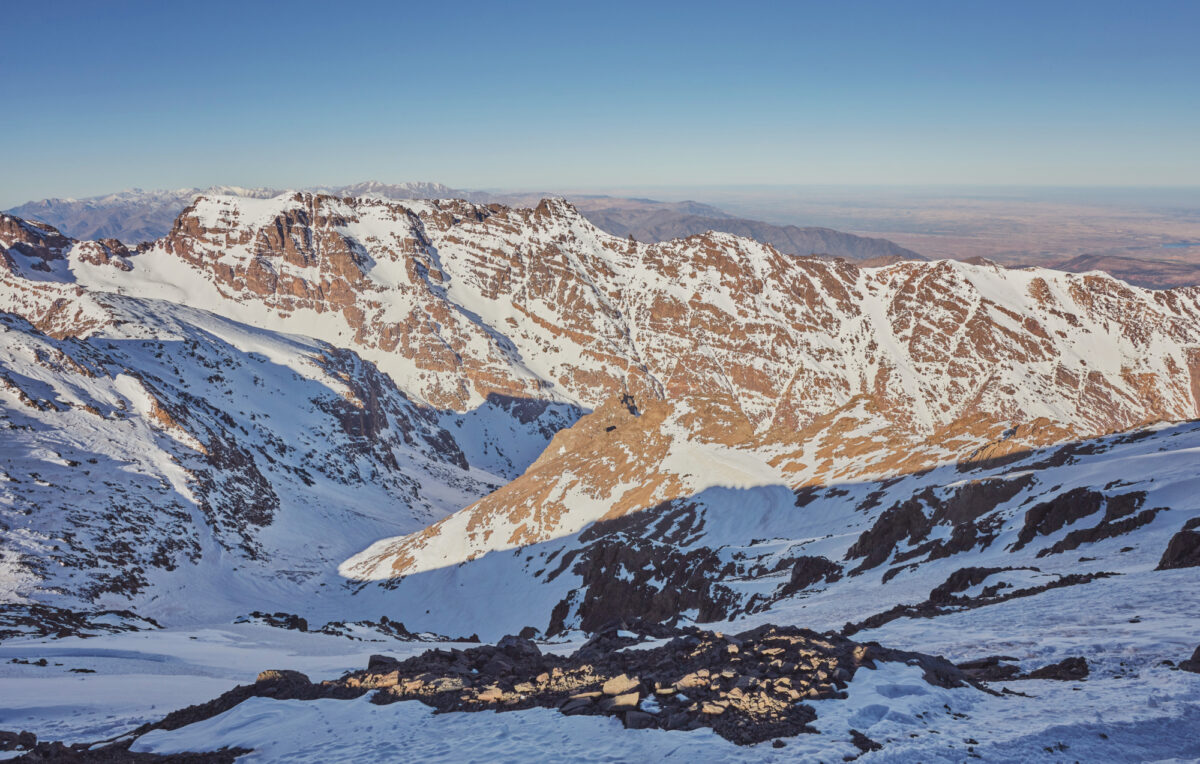
View from the hiking trail to the top of Mount Toubkal
Atlas trekking FAQs
Your questions, our expert answers
Question
When is the best time to trek in the Atlas Mountains?
Answer
Overall, I recommend trekking in either spring (April to June) and autumn (September to November). In spring, the weather is generally mild, and the mountains are beautifully adorned with blooming wildflowers. The snow from winter has usually melted at lower altitudes, making the trails more accessible. In autumn, the weather is similarly mild and stable, making for comfortable trekking conditions. The autumn colours can also make the landscapes particularly scenic.
The summer months (July and August) can be very hot, especially in the lower valleys, but it's still a good time for high-altitude treks like Mount Toubkal, where temperatures are cooler.
Winter (December to February) brings snow and cold weather, which can make high-altitude treks more challenging due to the need for winter gear and experience in snowy conditions. However, for experienced winter trekkers, this can provide a different kind of adventure.

